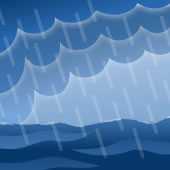STORM, FLOOD, AND HURRICANE RESPONSE

Guidelines for Fire Service Operations
The National Institute for Occupational Safety and Health (NIOSH) provides the following guidelines for preventing injury, illness, and death among fire fighters during responses to hurricanes, floods, and other large scale natural disasters. In addition to hazards described below, potential problems include lapses in command and operating procedures and shortages of equipment [communication equipment, fire fighting equipment, and personal protective equipment (PPE)].
Environmental hazards encountered by fire fighters mobilized to fight structural fires in the aftermath of large scale severe weather storms include structural collapse, electrical hazards, carbon monoxide from generators, helicopter operations, heat stress, and explosion hazards from unsecured liquid propane tanks. NIOSH offers the following safety precautions to protect fire fighters.
- Follow standard operating procedures (SOP) while setting up an organized command center at the site. These SOP should help ensure that fire fighters follow proper precautions, and identify potential hazards.
- Formulate a strategic plan of operations to identify potential risks (e.g. structural instabilities).
- Provide proper personal protective equipment to minimize risks of injury. If the fire involves an industrial site, potential risks from exposures to chemicals or the combustion products of chemicals will require personal protective equipment and other precautions appropriate for those risks.
- Ensure communications between fire fighters and the Incident Commander are available and working.
- Electrical hazards from downed power lines or other sources should be identified and addressed. Assume that all lines are energized, call the utility company to cut power to the lines or verify that the lines are not energized, and control the scene. Ensure protective shields, barriers, or alerting techniques are used to protect fire fighters from contacting energized electrical conductors.
- Carbon monoxide from generators may pose an additional hazard to firefighters.
- In areas where helicopters are flying or hovering near the ground, fire fighters should be aware of potential hazards associated with the effects of air turbulence from the helicopter's spinning blades. The turbulence could raise debris and could cause flames from a fire to behave erratically.
- Precautions should be followed to reduce risks of emotional and physical stress, fatigue, or physical demands from extreme environmental conditions. In particular, heat stress is a common problem. To prevent heat stress, educate fire fighters to recognize the early signs of heat stress, have proper medical evaluation, provide proper fluids and nourishment, and provide rest areas (rehabilitation units) to recover from the heat. Consider proper use of the station uniforms versus the use of turnout gear.
- Unsecured liquid propane tanks may pose an additional explosion hazard to firefighters.
- As needed, provide and use NIOSH-certified respirators and other personal protective equipment that meets Occupational Safety and Health Administration (OSHA) standards.
These guidelines will be reviewed on a regular basis and updated as needed.
Additional information can be found at the following websites:
http://www.cdc.gov/niosh/fire/
http://www.nvfc.org/
http://www.osha.gov/SLTC/emergencypreparedness/guides/floods.html
For more information,
or www.bt.cdc.gov/disasters,
or call CDC at 800-CDC-INFO (English and Spanish) or 888-232-6348 (TTY).
- Page last reviewed: August 12, 2013
- Page last updated: August 12, 2013
- Content source:
- National Institute for Occupational Safety and Health Office of the Director


 ShareCompartir
ShareCompartir